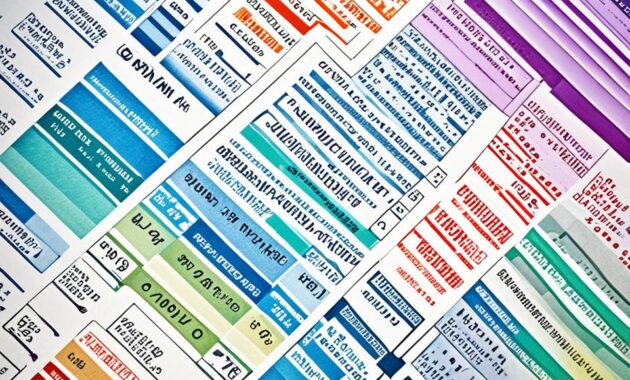Low interest personal loans are now a top choice for people wanting to borrow money affordably. They’re great for consolidating debt, financing big purchases, or getting emergency cash. This guide will walk you through the world of these loans, helping you find the right one for your financial needs.
Key Takeaways
- Understand the benefits of low interest personal loans, including debt consolidation and affordable financing
- Learn how factors like credit score, income, and debt-to-income ratio can impact personal loan interest rates
- Discover strategies to qualify for the lowest possible interest rates on personal loans
- Explore the differences between online and traditional lenders for personal loan options
- Gain insights into managing your personal loan effectively, including budgeting and repayment terms
What Are Low Interest Personal Loans?
Low interest personal loans are a great way to borrow money affordably. They usually have lower interest rates than other credit options. This means borrowers save on interest and have easier monthly payments.
Understanding Unsecured Personal Loans
Unsecured personal loans don’t need collateral like a house or car. This makes them easy to get for people without valuable assets. Lenders look at the borrower’s credit and ability to pay back the loan instead.
Benefits of Low Interest Rates
- Reduced interest costs over the loan’s life
- Lower monthly payments, making the loan more manageable
- Potential to save thousands of dollars compared to higher-interest options
- Greater financial flexibility and control
Choosing a low interest personal loan helps borrowers save money and makes repaying the loan easier. This lets them reach their financial goals faster.
“Low interest personal loans can be a game-changer, allowing borrowers to take control of their finances and make the most of their borrowing power.”
Factors Affecting Personal Loan Interest Rates
When you apply for a personal loan, the interest rate is key. Lenders look at several things to set the right interest rate for you. Knowing these factors can help you get better loan terms and find a loan that’s easy on your wallet.
Credit Score
Your credit score is a big factor in your loan’s interest rate. Lenders see people with high scores as less risky. So, they offer them lower rates. Keeping your credit score up by paying on time and using less credit can lower your rate.
Debt-to-Income Ratio
Your debt-to-income ratio is also important. It’s the ratio of your monthly debts to your income. Lenders like it when this ratio is low. It means you’re more likely to pay back the loan. Keeping this ratio low can get you a better rate.
Loan Term and Amount
The loan’s term and amount affect the interest rate too. Shorter terms and smaller amounts usually mean lower rates. This is because they’re less risky for lenders. Longer terms and bigger amounts can lead to higher rates.
Knowing what affects personal loan interest rates helps you improve your financial situation. This can increase your chances of getting a loan with a low interest rate. It lets you make smart choices and find the best loan for your needs.
“Securing a personal loan with a low interest rate can have a significant impact on the overall cost of your borrowing. Understanding the factors that influence these rates is crucial for making informed financial decisions.”
How to Qualify for Low Interest Personal Loans
To get a low interest personal loan, you need to work on making your credit better. This means focusing on two main things: having a good credit score and a low debt-to-income ratio.
Improving Your Credit Score
Your credit score is very important to lenders. They use it to see if you’re a good borrower. To get the best rates on a personal loan, try to have a credit score of 700 or higher. This shows you’re good with money and pay on time.
Here are ways to make your credit score better:
- Paying all bills on time, every time
- Keeping credit card balances low relative to your credit limits
- Limiting new credit applications to only what is necessary
- Regularly reviewing your credit report for errors or discrepancies
Debt-to-Income Ratio Considerations
Lenders also look at your debt-to-income (DTI) ratio. This ratio compares your total debt to your monthly income. A DTI ratio below 36% means you can handle more debt, like a personal loan.
To lower your DTI ratio, pay off debts and avoid new credit. This can help you qualify for a low-interest personal loan.
Working on these areas can boost your chances of getting a low-interest personal loan that fits your financial needs.
Uses of Low Interest Personal Loans
Low interest personal loans are a flexible and affordable way to finance. They can help cover unexpected costs or fund big purchases. Debt consolidation is a top use of these loans.
Debt Consolidation Made Affordable
Combining high-interest debts into one low-interest loan can change the game for those with high payments. With low interest rates, borrowers save a lot on interest charges and make monthly payments easier.
This method makes paying back easier and can lower the total borrowing cost. With a low interest personal loan, you can merge credit card debts, personal loans, or other debts into one. This makes managing your money more affordable.
“Consolidating my debts into a low interest personal loan was a game-changer. I was able to save hundreds of dollars each month and get my finances back on track.”
Using low interest personal loans helps borrowers manage their debt better. This option is key to improving debt management and securing financial stability.
Comparing Lenders for the Best Rates
Looking for the lowest interest personal loans means checking out different lenders, both online and traditional banks. Each one has its own rules, loan sizes, and rates. It’s important to look around to find the best deal for your money needs.
Think about these important points when checking out personal loan lenders:
- Annual Percentage Rate (APR): This shows the real cost of the loan, including interest and fees. Aim for the lowest APR to cut down your borrowing costs.
- Fees: Some lenders might charge extra fees, like origination fees or prepayment penalties. Make sure you know all the costs to avoid surprises.
- Repayment Terms: Having flexible repayment options, like varying loan terms, can change your monthly payments and total interest.
By taking the time to compare personal loan lenders, you can find the best interest rates and terms that work for you.
“Shopping around for the lowest interest rate on a personal loan can save you hundreds, if not thousands, of dollars over the life of the loan.”
The Application Process for Low Interest Personal Loans
Getting a low interest personal loan is easy, whether you apply online or with a traditional lender. To make the personal loan application process smoother, know what documents and info you need.
Required Documentation and Information
Lenders ask for certain info and documents when you apply for a personal loan:
- Proof of identity (driver’s license, passport, or other government-issued ID)
- Proof of income (pay stubs, tax returns, or bank statements)
- Employment details (job title, employer name, and length of employment)
- Information about your current debt and financial obligations (credit card balances, existing loans, and monthly payments)
- Details about the purpose of the loan (debt consolidation, home improvement, etc.)
Having these documents ready can make applying for a personal loan easier, whether online or through a traditional lender. This way, you can apply smoothly and efficiently.
| Required Documentation | Online Application | Traditional Lender Application |
|---|---|---|
| Proof of Identity | ✓ | ✓ |
| Proof of Income | ✓ | ✓ |
| Employment Details | ✓ | ✓ |
| Debt and Financial Obligations | ✓ | ✓ |
| Loan Purpose | ✓ | ✓ |
Knowing what documents you need and preparing your info can make applying for a personal loan easier. This way, you’re more likely to get a great low interest personal loan for your needs.
Low Interest Personal Loans: Online vs. Traditional Lenders
When looking for low interest personal loans, you can choose between online lenders and traditional banks or credit unions. Each has its own benefits. Knowing the pros and cons helps you pick the best option for your financial situation and needs.
Convenience and Speed with Online Lenders
Online personal loan providers offer a quick application process. You can fill out the forms and get a decision fast, sometimes in just minutes. This is great for those who need a quick loan solution.
Personalized Service from Traditional Lenders
Traditional banks and credit unions provide a more personal service. They might offer lower interest rates for those who qualify. Plus, you can build a long-term relationship with them.
| Comparison | Online Lenders | Traditional Lenders |
|---|---|---|
| Application Process | Streamlined and convenient | May require more documentation and personal interaction |
| Approval Time | Faster, often within minutes | May take longer, depending on the institution |
| Interest Rates | Rates can vary, may be higher for some borrowers | Potentially lower rates for qualified borrowers |
| Personalized Service | Limited, based on online interaction | More personalized attention and support |
The choice between online personal loans and traditional bank loans depends on what you need and like. Think about convenience, how fast you need the loan, the interest rates, and the level of personal service. This will help you make a choice that fits your financial goals.
Repayment Terms and Flexible Options
Personal loans offer flexibility in repayment terms. Borrowers can pick from terms that last one to seven years or more. This lets them find a plan that fits their budget and goals.
Choosing the Right Loan Term
Choosing the right personal loan repayment terms is key. It affects the interest paid and your monthly payment. Shorter terms have lower interest but higher monthly payments. Longer terms mean lower monthly payments but more interest over time.
When picking a repayment option, think about your budget and goals. Look at your income, debts, and why you need the loan. Finding the right balance between monthly payments and the loan’s total cost is crucial. This way, you can pick flexible options that fit your finances.
“The key to a successful personal loan is finding the right balance between monthly payments and the overall cost of the loan.”
The personal loan repayment terms you pick should help you manage your money well. They should also help you reach your financial goals. By looking at your options carefully, you can get a low interest personal loan that suits you.
Understanding Fees and Hidden Costs

When you apply for a personal loan, it’s key to know about the fees and hidden costs. These can greatly affect the loan’s total cost. So, it’s vital to look at them closely.
The origination fee is a common charge. It’s a part of the loan amount and covers the lender’s application processing costs. Prepayment penalties might also apply if you pay off the loan too soon.
The Annual Percentage Rate (APR) shows the real cost of the personal loan. It includes the interest rate and any extra fees. Knowing the APR helps you make a smart choice and avoid surprise costs.
| Fee Type | Description | Potential Impact |
|---|---|---|
| Origination Fees | A percentage-based fee charged by the lender to cover the cost of processing the loan application. | Can increase the overall cost of the personal loan. |
| Prepayment Penalties | Fees charged if you decide to pay off the loan early. | May discourage early repayment and result in higher overall costs. |
| Annual Percentage Rate (APR) | The true cost of the loan, including the interest rate and any applicable fees. | Provides a more accurate representation of the total cost of the personal loan. |
Knowing about these fees and hidden costs helps you pick the right personal loan for your budget.
Tips for Managing Your Personal Loan
After getting a low-interest personal loan, it’s key to handle it well for a smooth repayment. This means making a solid budget, paying on time, and avoiding late fees or missing payments. These actions can hurt your credit score. By being financially smart, you keep your loan under control and get the most from low-interest rates.
Budgeting and Responsible Borrowing
Creating a detailed budget is vital for managing your loan. Set aside part of your income for your loan payments and other important bills. Don’t borrow more than you can pay back. Paying on time not only saves you from late fees but also shows you’re a responsible borrower. This can improve your credit score over time.
Keep an eye on your loan details and payment dates. Setting up automatic payments can help you never miss a payment. By being disciplined with your loan, you’ll reach your financial goals and protect your credit health.







